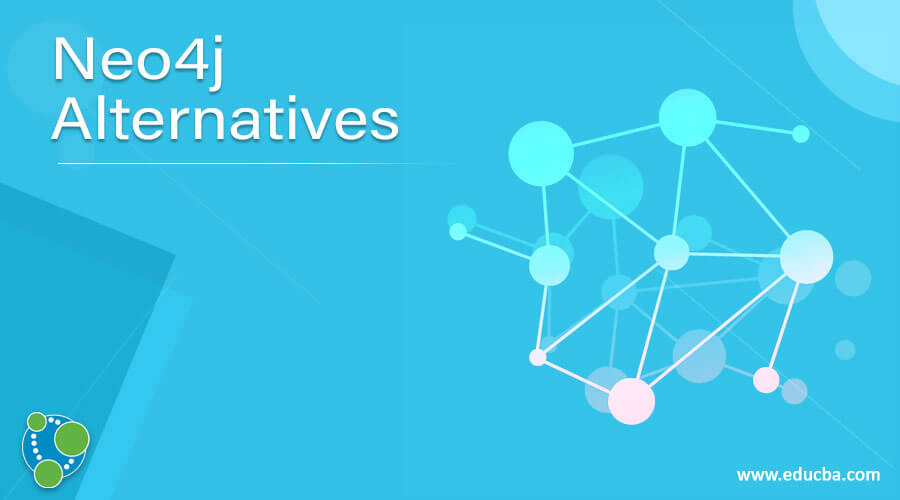Updated July 5, 2023
Introduction to Neo4j Alternatives
Neo4j, a graph database management system, was actively released in 2007. It is implemented in the Java language and actively facilitates access to software written in other languages through the Cipher query language, leveraging the transaction HTTP endpoint or the binary Bolt protocol. In Neo4j, data or information is actively stored in formats such as edges, nodes, or attributes. Both edges and nodes can possess any number of attributes and can be labeled. There are other alternatives available for Neo4j which provide similar functionalities. Here in this article, we are going to discuss these alternatives.
List of Neo4j Alternatives
Below is the list of neo4j alternatives.
-
ArangoDB
It is a distributed free and open-source database system. This database system supports three data models document, key/ value, and graph, with one database core and unified query language AQL. AQL stands for ArangoDB Query Language. With ArangoDB we can declare a combination of different data access patterns in a single query. While working with graph data, it provides scalable queries. Using Foxx framework, ArangoDB integrates with native Javascript libraries directly.
-
OrientDB
It is a distributed graph database system that provides the flexibility of a document database. It is an open-source NoSQL database management system. It supports models like graphs, documents, keys/values, and object. Relationships are managed as in a graph database with a direct connection between records. It supports three types of modes, namely schema-less, schema-full, and schema mixed. It can develop in Cloud. It supports various cloud providers like Microsoft Azure, AWS (Amazon Web services), DigitalOcean.
-
Cassandra
It introduced CQL, which means Cassandra query language is an interface to access Cassandra as an alternative to the traditional SQL language. Cassandra replicates data automatically to multiple nodes for fault tolerance. Replication strategies are configurable. It is a hybrid between key value and tabular database management systems.
-
HyperGraphDB
HyperGraphDB is an active general-purpose database management system that is designed based on a powerful knowledge management formalism called a direct hypergraph. It is specifically designed for knowledge management, including projects related to persistent memory models, artificial intelligence, and the semantic web.
-
Azure cosmos DB
Generally, azure cosmos DB is classified under NoSQL database. At the container level, TTL (Time to live) is specified to automatically delete the items after a certain amount of time, expressed in seconds. The countdown starts immediately after the last update of the item.
-
Redis
It supports various kinds of abstract data structures such as lists, maps, string, bitmap, streams, and spatial indexes. It provides master replica replication. Data from any media server can replicate to any number of replicas. One replica can be a master to the other replica. This allows the implementation of a single-rooted replication tree. The Cluster can scale up to 1000 nodes. Organizations like Twitter, Amazon Web Services, Microsoft, and Alibaba are using Redis.
-
Oracle Spatial and graph
It supports the full range of geospatial data and analytics for land management and geographic information systems, transportation, mobile location services, Lidar analysis, sales territory management, and location-enabled business intelligence. Its graph features include RDF graphs for applications ranging from semantic data integration to social networking analysis to linked open data and network graphs used in transportation, utilities, energy, telcos, and drive time analysis for sales and marketing applications.
-
DGraph
It shares data to horizontally scale to hundreds of servers, designed to minimize the number of disks seeks and network calls. It can easily scale to multiple machines or data centers.
Conclusion
In this article, we have seen Neo4j alternatives along with their features and uses. You can choose any of them based on your requirements. We hope you will find this article helpful.
Recommended Articles
This is a guide to Neo4j Alternatives. Here we discuss the Introduction, and list of Neo4j Alternatives. You may also have a look at the following articles to learn more –



